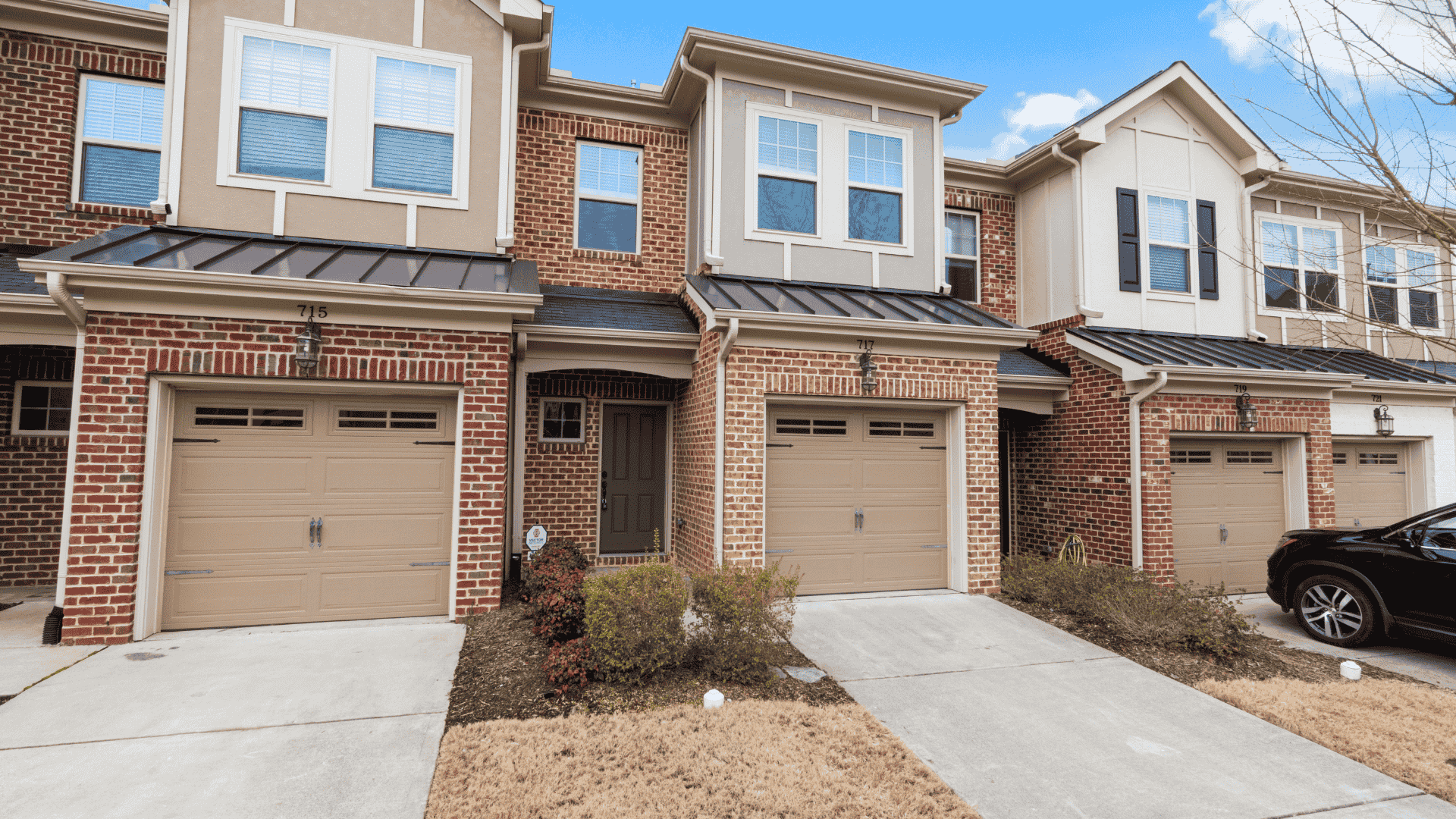U.S. Housing Market Update and Analysis: May 2025
U.S. Housing Market Update: May 2025 Existing Home Sales and What They Mean for International Property Investors
FREE DOWNLOAD: 10 Costly Mistakes Foreigners Make Buying U.S. Real Estate
For international investors building a U.S. property investment portfolio, staying updated on the housing market is vital. The latest numbers show small but important changes. These shifts can affect your plans for consistent cash flow and finding good deals.
This news piece looks at the U.S. existing home sales data for May 2025. We will break down the key figures. We’ll also explain what these trends mean for global property investors like you. Understanding the market helps you make smart choices.
Investment Properties: Browse U.S. Investment Properties Tailored for Non-Resident Investors
Key Things to Know: May 2025 U.S. Housing Market Update
- Sales Up Slightly in May: Sales of existing homes rose a little (0.8%) from April. But they were still down (0.7%) compared to May last year.
- Mortgage Rates are Key: Sales were slow because mortgage rates stayed high. Rates went over 7% in April, impacting buyers.
- More Homes for Sale: The number of homes on the market went up by more than 20% from last year. This is a big jump in choices for buyers.
- Prices Hit Record Highs: Despite more homes for sale, the median price for a home sold in May was a record $422,800. Prices rose 1.3% from last year.
- Demand Still Strong: Even with high prices, many homes (28%) sold for more than their asking price. This shows buyers are still eager.
- Upper-End Market Changes: Sales for very expensive homes have slowed down. But homes between $750,000 and $1 million saw a small rise.
- Fewer First-Time Buyers: Only 30% of buyers were first-timers. This is low and shows ongoing challenges for new buyers.
- All-Cash Deals Increase: More deals (27%) were paid for entirely with cash. This hints at strong financial buyers in the market.
Related: 5 Year Forecast for the U.S. Real Estate Market
U.S. Existing Home Sales: May 2025 Snapshot
The U.S. housing market saw a small increase in sales in May. This offers new insights for international investors.
- Small Sales Increase: Sales of homes that were previously owned went up by a tiny 0.8% from April. This was a surprise, as many experts thought sales would drop. However, sales were still 0.7% lower than in May of last year. (Source: National Association of Realtors (NAR) Data, May 2025)
- Regional Differences: Sales were strongest in the Northeast, rising 4.2% from April. They also grew in the Midwest and South. But in the West, sales fell by 5.4%. The West is the most expensive part of the country, according to NAR.
- High Rates Slow Buying: These sales figures are based on deals that closed in March and April. Mortgage rates were steady in March but then jumped above 7% in April. Lawrence Yun, NAR’s chief economist, said, “The relatively subdued sales are largely due to persistently high mortgage rates. Lower interest rates will attract more buyers and sellers to the housing market.” He believes if rates drop later in 2025, home sales will go up. This is due to good income growth, enough homes to buy, and many jobs.
Related: National Association of Realtors House Updated Price Forecast for 2025
Supply, Prices, and Buyer Behaviour
Beyond sales numbers, how many homes are for sale and what prices they fetch tell more of the story for international investors.
- More Homes Available: There was a big jump in homes for sale. At the end of May, 1.54 million homes were available. This is over 20% more than in May last year. This means buyers have more choices.
- Prices Still High: Even with more homes on the market, prices are still rising. The median price for an existing home sold in May was $422,800. This is 1.3% higher than last year. It’s also a new record high for the month of May. This shows demand is still strong compared to how many homes are available. About 28% of homes sold for more than their listed price.
- Market Segments Show Shifts: Sales were stronger for more expensive homes. But sales for homes over $1 million fell compared to last year. Only homes priced between $750,000 and $1 million saw a small 1% increase. Lawrence Yun noted, “The upper end market is showing no difference compared to other price points.” He suggested this could be due to older market changes, like stock market ups and downs when tariffs were first announced in April.
- Homes Take Longer to Sell: Homes are now taking 27 days to sell. This is longer than 24 days a year ago.
- Buyer Trends: Only 30% of buyers were buying their first home. This is down from 31% last year and still quite low. This shows it’s still tough for new buyers. Also, 27% of all sales were all-cash deals. This is more than the year before. This highlights strong buyers who don’t need loans.
Related: The Best U.S. Real Estate Markets for First Time Investors
What This Means for International Property Investors
For international investors focused on consistent cash flow and smart U.S. property investment, these trends offer key insights:
- Navigating High Prices: Record-high prices mean you must be very careful when valuing properties. Focus on areas where rental income can truly cover your costs and bring good cash flow.
- Opportunities in Higher Inventory: More homes for sale can mean less competition. This might give you a better chance to negotiate prices. Look for motivated sellers.
- Impact of Mortgage Rates: High mortgage rates continue to slow down the market. If rates fall later in the year, as experts suggest, it could bring more buyers (and possibly more sellers). This could change market dynamics. Prepare to act if rates become more favorable for future refinancing.
- All-Cash Advantage: If you are an international investor with cash, you have a strong advantage. You can avoid high mortgage rates. This also makes your offer more attractive to sellers.
- Regional Focus: The market acts differently in different areas. The Northeast saw growth, while the West saw a drop. Research specific cities and neighbourhoods. This helps you find markets that fit your investment goals.
- Long-Term Strategy: The U.S. housing market remains strong over the long run. Even with current challenges, focusing on properties with solid rental demand and income potential is vital.
Related: The Best U.S. Real Estate Markets for Non-Resident Property Investors in 2025
Conclusion: Staying Agile in the U.S. Housing Market
The U.S. housing market in May 2025 showed mixed signals. Sales increased slightly, thanks to more homes for sale. But high mortgage rates kept growth slow. Prices reached new highs.
For international investors, this means staying agile and informed. Understand that the market is changing. Use data to make smart decisions. Focus on properties that deliver consistent cash flow. This approach will help you succeed in the dynamic U.S. real estate market.
Previous Article: U.S. Housing Markets with Biggest Home Price Declines So Far in 2025
GROW YOUR WEALTH WITH U.S. REAL ESTATE
Start your US real estate investment journey today, and book a Free 1-2-1 Discovery Call with a member of our senior management team.
“Having personally invested in over 120 US rental properties from overseas, I know the true value of getting the right advice and support.
David Garner – Cashflow Rentals

GROW YOUR WEALTH WITH U.S. REAL ESTATE
Start your U.S. real estate investment journey today with high-quality cashflow real estate. Book a Free 1-2-1 Discovery Call with a member of our senior management team to discuss your personalized strategy.
“Having personally invested in over 120 US rental properties from overseas, I know the true value of getting the right advice and support.
David Garner – Cashflow Rentals
Frequently Asked Questions (FAQs) on the U.S. Housing Market Outlook for International Investors
Here are common questions international investors have about the latest U.S. housing market trends.
Q: Did U.S. home sales go up or down in May 2025?
A: Sales of previously owned homes went up slightly by 0.8% from April. However, they were still 0.7% lower than in May of last year.
Q: Why are home sales still slow despite more homes for sale?
A: Sales are largely slow because mortgage rates remain high. When rates went over 7% in April, it made buying a home more expensive, which slows down buyer activity.
Q: Are U.S. home prices still rising?
A: Yes, the median price of an existing home sold in May 2025 was $422,800. This is up 1.3% from a year ago and is a new record high for the month of May.
Q: What does the increase in homes for sale mean for international investors?
A: An increase in homes for sale (supply) means buyers have more choices and potentially face less competition. This could create opportunities to negotiate better prices, which is good for your U.S. property investment strategy.
Q: Are all parts of the U.S. housing market seeing the same trends?
A: No, market trends vary by region. For example, sales rose in the Northeast, Midwest, and South in May, but they fell in the West, which is the most expensive region. It’s important to research specific local markets.
Q: Is it still a good time for international investors to buy U.S. property?
A: The U.S. market still offers opportunities, especially for international investors focused on consistent cash flow. With more homes available and potential for future rate drops, strategic buyers can find value. However, careful due diligence on specific properties and markets is crucial.
Q: How can high mortgage rates impact an international investor’s cash flow?
A: High mortgage rates lead to higher monthly loan payments. This means a larger portion of your rental income goes towards servicing the debt, which can reduce your net profit and thus impact your consistent cash flow from the property.







![USA Property Investment for Foreign Buyers [2025 Guide]](https://cashflowrentals.net/wp-content/uploads/2025/07/USA-Property-Investment-for-Foreigners-Expert-2025-Guide-500x383.png)



